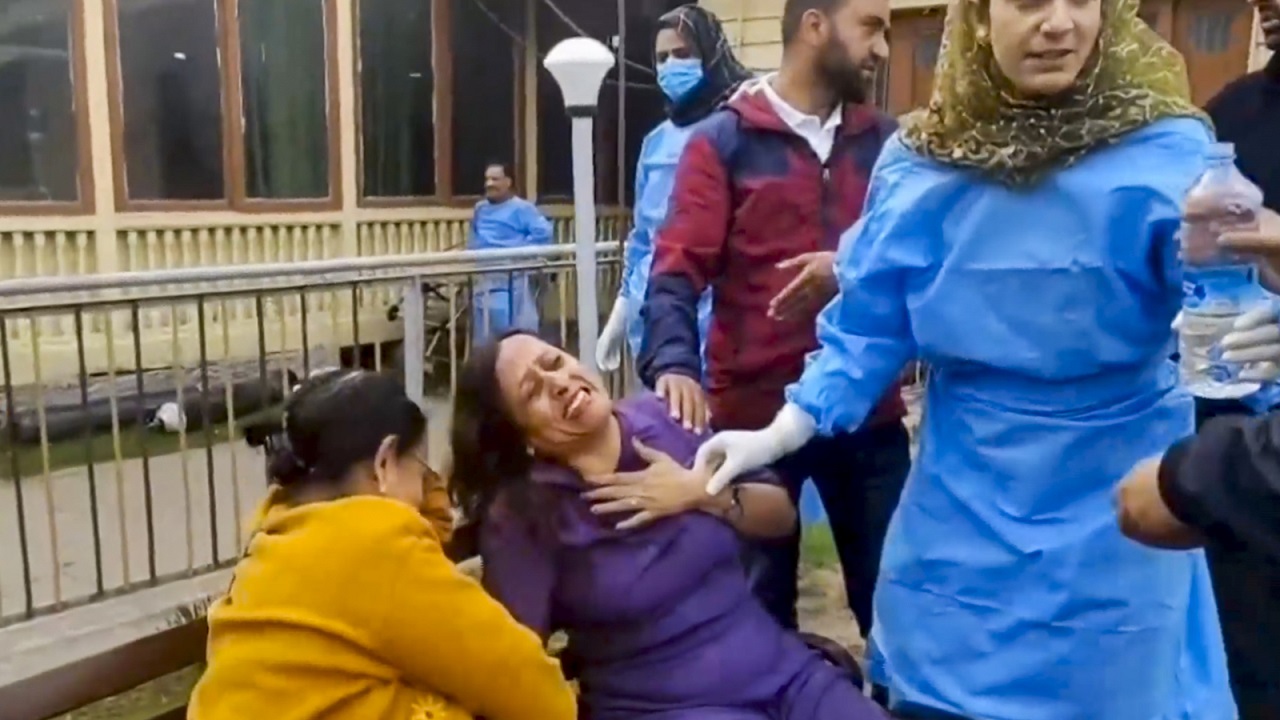Pahalgam Attack 2025: A Setback to Kashmir’s Path of Peace
Context:
Despite significant progress in normalcy and tourism post the abrogation of Article 370 in August 2019, a devastating terrorist attack in Baisaran Valley, Pahalgam, Jammu & Kashmir, has shaken public confidence. The killing of 28 people, mostly tourists, marks a serious setback to the region’s peace-building efforts and poses a renewed challenge to India's internal security architecture.
The Attack: What Happened?
-
Location: Baisaran Valley, 5 km from Pahalgam, in Anantnag district, J&K.
-
Casualties: 28 people killed, mostly domestic tourists.
-
Accessibility Challenge: The area is high-altitude and motor-inaccessible, reachable only by foot or horseback, making rescue operations extremely difficult.
-
Perpetrators: The Resistance Front (TRF), a proxy of Lashkar-e-Taiba, claimed responsibility.
Pahalgam: An Overview
-
Region: Located in southern Kashmir, ~90 km from Srinagar Airport.
-
Significance: A major tourism and pilgrimage hub, popular for its natural beauty and religious sites.
Key Tourist Attractions:
-
Amarnath Cave Temple – A sacred Hindu shrine.
-
Betaab Valley – Named after the 1983 Bollywood movie.
-
Aru Wildlife Sanctuary – Hosts rare species like the Himalayan brown bear.
-
Tulian Lake – Alpine lake, popular among trekkers.
Baisaran Valley: The 'Mini Switzerland' of Kashmir
-
Distance from Pahalgam: About 5 km, accessible only on foot or pony.
-
Landscape: Lush meadows, pine forests, and snow-covered peaks.
-
Tourism Significance: Acts as a base camp for trekkers heading to Tulian Lake.
-
Nickname: Called "Mini Switzerland" for its European-like landscape.
-
Year-Round Destination: Attracts tourists in both summer and winter seasons.
The Resistance Front (TRF): A Proxy Militant Outfit
Origins and Evolution
-
Formed shortly after Article 370 abrogation (August 2019).
-
A proxy of Lashkar-e-Taiba, backed by Pakistan’s ISI.
-
Active in recruiting and radicalizing youth via social media campaigns.
Government Response
-
Declared a terrorist organization under the UAPA in January 2023 by the Ministry of Home Affairs.
-
Cited for inciting violence and spreading anti-India propaganda.
Notable Attacks by TRF
-
Targeted tourists, migrant workers, and minority communities.
-
Focused on destabilizing the Valley and derailing the peace narrative.
Strategic Implications of the Pahalgam Attack
1. Challenge to Normalcy Post-Article 370
-
Post-2019, J&K witnessed:
-
Decline in terror incidents.
-
Record tourism (over 1.8 crore visitors in 2023).
-
-
The attack shatters the perception of peace and security.
2. Targeting of Economic Revival
-
Tourism was seen as a symbol of economic and social integration.
-
Attack aimed at undermining investor confidence and reviving fear.
3. Strategic Timing
-
Incident occurred during:
-
Visit of US Vice President JD Vance to India.
-
PM Modi’s diplomatic trip to Saudi Arabia.
-
-
Reflects past patterns of timing attacks to gain global attention:
-
March 2000: 36 Sikhs massacred before President Clinton’s visit.
-
May 2002: Kaluchak attack during US official Christina Rocca’s visit.
-
Geopolitical Undertones
-
Attack followed provocative rhetoric from Pakistan Army Chief Gen. Asim Munir, who referred to Kashmir as Pakistan’s “jugular vein.”
-
Signifies Pakistan’s continued psychological warfare and proxy engagement through non-state actors.
Conclusion: A Wake-Up Call for India’s Internal Security
The Pahalgam attack is a stark reminder that peace in Jammu & Kashmir remains fragile. Despite development initiatives and diplomatic engagements, cross-border terror networks and proxy outfits like TRF continue to pose threats.
Policy Recommendations:
-
Strengthen border intelligence and surveillance.
-
Boost infrastructure in tourist-prone, high-risk zones.
-
Promote community vigilance and counter-radicalization measures.
-
Sustain diplomatic efforts to isolate Pakistan internationally on terror financing.




Comments (0)